 Get In Touch
Get In Touch
 Get In Touch
Get In Touch
Social media has revolutionized the marketing landscape, presenting unparalleled opportunities and challenges for businesses, including those navigating the competitive digital ecosystem. For digital marketing agencies in Philadelphia, these platforms have become vital tools to engage customers, build robust brand identities, and drive measurable sales growth. Originally designed for personal connections, social media has evolved into a multifaceted marketing powerhouse that has shifted priorities in customer interaction, advertising strategies, and branding. By leveraging these platforms effectively, businesses can create dynamic, impactful campaigns tailored to resonate with diverse audiences.
One of the most significant changes social media has introduced is the move from one-way communication to a two-way dialogue. Traditional advertising, such as television or print ads, allowed brands to broadcast their messages without direct feedback. Social media, however, has created platforms for real-time conversations, enabling businesses to respond to customer inquiries, complaints, and compliments instantaneously. This shift not only humanizes brands but also fosters customer loyalty.
Social media platforms allow businesses to create communities around their brands. For example, companies can establish groups, pages, or hashtags that bring like-minded individuals together. These communities serve as spaces for engagement, where customers share their experiences, seek advice, and advocate for the brand. Such interactions build a sense of belonging and enhance brand loyalty.
Social media platforms like Facebook, Instagram, and LinkedIn have redefined advertising by offering advanced targeting options. Advertisers can now use demographic, geographic, and behavioral data to reach specific audiences. This precision minimizes wasted ad spend and maximizes ROI, a stark contrast to the broader reach of traditional advertising methods.
For small and medium-sized businesses, social media offers cost-effective advertising solutions. Platforms like TikTok and Instagram enable brands to reach millions with relatively low budgets through organic content, influencer collaborations, or paid ads. The flexibility of these platforms has democratized advertising, making it accessible to businesses of all sizes.
Social media has also popularized interactive content such as polls, quizzes, and live videos. These formats engage users more effectively than static ads, encouraging them to interact directly with the brand. For example, Instagram’s “Stories” feature allows businesses to post time-sensitive content that includes interactive elements like swipe-up links or Q&A sessions, creating a dynamic marketing experience.

Social media places a strong emphasis on visual branding. Platforms like Instagram and Pinterest prioritize high-quality images and videos, making a visually appealing aesthetic crucial for success. Brands invest in consistent color schemes, typography, and imagery to create a recognizable and memorable online presence.
Today’s consumers value authenticity, and social platforms have pushed brands to adopt more transparent practices. Through behind-the-scenes content, user-generated posts, and honest communication, brands can build trust with their audience. For instance, a company might share stories about its sustainable practices or spotlight real customer testimonials to connect more genuinely with followers.
Social media has also blurred the lines between corporate and personal branding. Executives and employees often use platforms like LinkedIn and Twitter to share insights, achievements, and company updates, creating a human face for the brand. This personal approach not only boosts credibility but also enhances the company’s overall reputation.
Social media has empowered marketers with detailed analytics and performance metrics. Platforms provide insights into engagement rates, click-through rates, and audience demographics, enabling businesses to refine their strategies continuously. These analytics offer valuable feedback on what resonates with audiences, allowing brands to adapt and evolve.
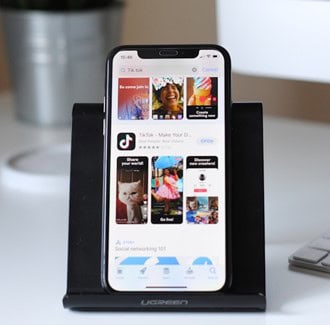
With millions of businesses vying for attention on social platforms, standing out can be challenging. This oversaturation has made it more difficult for brands to achieve organic reach, often necessitating paid promotions.
Social media platforms frequently update their algorithms, impacting how content is displayed and discovered. Marketers must stay agile, continuously updating their strategies to align with these changes.
The openness of social media also exposes brands to public criticism. A single negative comment or viral post can damage a brand’s reputation, requiring swift and effective crisis management.
The social media landscape continues to evolve, with trends like augmented reality (AR), virtual reality (VR), and social commerce gaining momentum. Platforms are increasingly integrating e-commerce features, allowing users to shop directly from their feeds. Additionally, the rise of AI-powered tools will enable even more personalized marketing experiences.
Social media has undeniably transformed marketing by reshaping customer interaction, advertising strategies, and branding. Businesses that embrace these changes and adapt to the dynamic nature of social platforms can not only survive but thrive in this digital age. By leveraging social media effectively, companies can build stronger connections with their audiences, enhance brand loyalty, and drive long-term growth.
In business, a strong and recognizable brand presence is essential for success. Social media, a primary communication channel for businesses, provides opportunities for direct interaction with consumers. However, the effectiveness of a business’s social media strategy often hinges on one crucial factor: consistent branding. When businesses maintain a uniform brand voice, image, and message across all social media platforms, they foster trust, improve customer recognition, and reinforce their identity.
Social media marketing agencies in Philadelphia can help your business create consistent branding across social media platforms while providing actionable strategies to help businesses maintain cohesion in their digital presence.
Consumers are exposed to an overwhelming amount of content daily. Consistent branding helps your business stand out and be instantly recognizable. Whether it’s your logo, color scheme, tone of voice, or tagline, maintaining consistency across platforms makes your brand memorable.
For example, if a customer sees your Facebook post in the morning, your Instagram story in the afternoon, and a tweet in the evening, all of these should reflect the same branding elements. This familiarity creates mental associations, helping consumers recognize your brand regardless of where they encounter it.
Consistency builds trust. When customers see uniformity in how your brand presents itself, they perceive your business as professional and reliable. On the contrary, inconsistency in branding can create confusion and skepticism. For instance, if your Twitter feed is casual and humorous but your LinkedIn profile is formal and serious, it may raise doubts about the authenticity of your business.
Trust is particularly critical in social media, where customers rely on a brand’s online presence to make purchasing decisions. A brand that communicates cohesively is more likely to be seen as dependable and credible.
Your social media presence is a reflection of your business’s identity and values. When your branding is consistent across platforms, it reinforces what your brand stands for. This alignment is crucial in communicating your business’s mission and goals to your audience.
For example, if your brand promotes sustainability, then your messaging, imagery, and tone across all social media channels should highlight your commitment to the environment. Consistent storytelling ensures that your audience clearly understands and connects with your brand’s core values.
A seamless, cohesive experience across platforms contributes to a positive customer journey. Whether a potential customer interacts with your brand on Instagram, Facebook, or X, they should feel like they are dealing with the same company. This enhances user experience and eliminates friction during touchpoints.
By creating consistent branding, you also make it easier for customers to navigate your content, engage with your posts, and take action (e.g., visiting your website or making a purchase). A fragmented brand image can lead to confusion and diminish engagement.
To achieve brand consistency across social media, businesses should focus on several key elements:
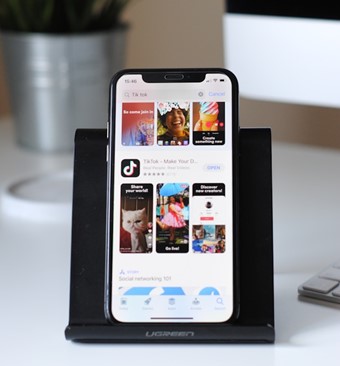
Your brand’s visual identity is one of the most recognizable elements of your business. This includes your logo, color palette, typography, and imagery style. Use these elements uniformly across platforms to create a cohesive look.
Your tone of voice is how your brand “sounds” in written communication. Whether your brand is playful, authoritative, or casual, it’s important to maintain the same tone across all social media platforms.
For instance, a luxury fashion brand would likely use a sophisticated, elegant tone, while a tech startup might prefer a friendly and innovative voice. Maintaining a consistent tone ensures that your brand feels authentic and cohesive to your audience.
Your messaging should align with your brand’s mission and values. Develop a content strategy that consistently reinforces your core message across platforms. The themes and topics you focus on should also align with your overall brand identity.
For example, if your brand is focused on health and wellness, your social media posts should regularly highlight tips, advice, and products related to that theme. Avoid posting unrelated content that may confuse your audience or dilute your brand identity.
Hashtags and keywords play a role in how your content is discovered on social media. Consistently using brand-specific hashtags or relevant keywords helps improve visibility and reinforces your brand identity.
For example, Coca-Cola often uses the hashtag #ShareACoke, which has become synonymous with their brand. Having signature hashtags allows your audience to easily identify and engage with your content.
Creating comprehensive brand guidelines is the first step toward ensuring consistency. These guidelines should include everything from logo usage, colors, fonts, and imagery styles to tone of voice and messaging. Share these guidelines with your team, including social media managers and content creators, to ensure everyone follows the same rules.
Social media management tools like Hootsuite, Buffer, or Sprout Social allow you to schedule posts and monitor content across platforms from one centralized location. By using these tools, you can ensure that your content remains consistent and well-coordinated across all channels.
If multiple people are managing your social media accounts, ensure that everyone is on the same page. Regularly update your team on branding expectations and any changes to your brand guidelines. Conduct training sessions to ensure consistent execution.
Regular audits of your social media accounts can help you identify inconsistencies in branding. Review each platform to ensure that your logo, color scheme, tone, and content themes are aligned. Make necessary adjustments to bring everything back in line.
Consistent branding across social media platforms is essential for building a recognizable, trusted, and professional image. It strengthens brand recognition, enhances customer trust, and reinforces your business’s identity and values. By focusing on visual consistency, maintaining a unified tone, and aligning your messaging, your business can create a seamless social media experience that resonates with your audience.
To stay competitive in today’s digital marketplace, businesses need to prioritize branding consistency across all social media platforms. Not only does this strategy foster customer loyalty, but it also ensures that your brand’s message remains clear and impactful in a crowded online environment.
The first question we ask on our website’s homepage is, “How can we help you tell your story?” We ask this not only because of our genuine interest in our client’s background, but because we also understand how important it is for consumers to understand what a brand represents. The online landscape is crowded, and to stand out from the masses, businesses need to be able to connect with their customers on a deeper level. This deeper connection can be accomplished through authenticity.
Brands that try to grow with cheesy, overused slogans or recycled messaging that competitors have used in their space for generations are destined to fail. Instead, the modern consumer looks to do business with companies that stand for something and aren’t afraid to share their values. Today, we will examine what it takes for an authentic brand to attract and breed loyalty from a consumer base.
A brand that practices authenticity maintains a consistent voice across all marketing channels. The voice always reflects the genuine beliefs or mission statement of the brand. Typically, when a brand can pinpoint what they stand for, it can quickly pinpoint who its target market is and should be. This allows a company to disregard marketing tactics that cast a wide net and wait to see what comes back its way. Conversely, authentic brands know that their mission aligns with a particular group of people who will not only utilize their product or service, but also want to actively follow them across different channels.
An authentic brand is very similar to an authentic person. They possess essential traits like welcomeness, honesty, and consideration for the thoughts and opinions of others. In addition, authentic brands will establish trust with their audience by delivering what they promise via their marketing materials. Establishing trust with your audience creates loyal followers and customers who will return to your content or products over and over. As a result, you’ll grow a community around your brand that makes it stand out from the crowd.
The difficulty of establishing trust in the digital age is that it can easily be tarnished in an instant. With online review platforms more accessible than ever, a brand is always just a few negative reviews away from losing the trust they worked so hard to establish. This is why marketing materials must never overpromise. When a company does fail to deliver on its word, the best course of action is to take ownership of the mistake and remedy the issue as quickly and efficiently as possible. Again, reverting to authenticity and showing unhappy customers that the business cares about them can help make the best of an otherwise unfortunate situation.
Whenever an opportunity arises to personalize messaging, brands should take advantage. The most successful authentic brands will utilize conversational marketing tactics. Showing an understanding of the fact that people are busy, it can simply be more effective to get directly to the point rather than hit people over the head with technical jargon and supporting arguments. The key is to quickly establish who or what the brand represents, then support that in every piece of marketing material and every product or service provided.
It is especially great for brands to share information regarding any causes or initiatives they support openly. Local businesses can do themselves a huge service by establishing a presence in their community, as having pictures supporting a brand show up to support a cause is much more powerful than a press release that states a monetary figure donated.
Finally, while we have established that keeping a brand’s voice consistent across platforms is vital, it is important for those in need of a marketing update to consider specific platforms first. For starters, the copy on a website should reflect who a brand is and what they care about. Again, this is why we start by asking about your story, we care! And we show it with our actions for every client we partner with. The next place is across all relevant social channels. Social media platforms provide the perfect place to give consumers more background on a company’s personality and values. Finally, the team members themselves are the last piece of the puzzle. Many stagnant companies have sales reps that contradict what their website or social profiles represent. Neff partners with clients to ensure that all facets of a business are rowing the boat in the same direction. Contact our team today to learn more about the importance of authenticity in marketing.
Every individual has a brand image cultivated through interests, style, language, friends, and more. Some people actively work to maintain a specific image. Others have a brand based on how they naturally act. Either way, we all add to and modify our own brand with every decision we make. The same logic can easily be applied to businesses. The only difference is that successful brands don’t often have the luxury of not actively considering every facet that goes into their company’s persona.
One of the best parts of working with branding agencies like Neff is the excitement of launching a brand from scratch. The challenge of carving out a space in the marketplace can be daunting, but it can be incredibly rewarding when done correctly. This is why we take the time to get to know the people behind a brand to ensure that their vision can turn into a reality.
Many branding agencies understand that there is a need for consistency throughout a branding campaign, but this doesn’t mean they all successfully accomplish this feat. Consistency is the essential element in establishing credibility in a brand. To start the process, groundwork must be laid by establishing what focal product or services are being offered and who makes up the target audience for that product or service. When a target audience is identified, it is time to dive deeply into their behaviors, their problems, and how a new product or service will make their lives better.
Identifying a target audience will also help to establish who the competitors are for a new brand’s product or service. Learning what already works well for a competitor and what does not is a great way to identify what elements should be taken and refined, as well as what elements should be downplayed. No one wants to be a copycat of their competitors, but understanding who they are and how they market themselves can significantly help a business identify its own focus and personality. Companies struggling with establishing their voice should start by testing different business slogans. When a slogan copy works, it will help shape the remainder of the branding puzzle.
As a premier logo design company in the United States, our experts understand the importance of color. Each color can represent different things when people identify them. Once a brand color is selected, a brand font should also be created. As a brand grows and marketing pieces are put in place, the consistency in color and font will help people to recognize and retain information on what that brand represents.
Once the details are sorted and the research phase is complete, our team works to create a buzz about the brand. Launching a business successfully is much easier when there’s anticipation built throughout the target audience. Our experts work to create this buzz through many different channels. For some businesses, the best route is to amplify efforts via public relations to reach as many would-be customers as possible. For others, it’s best to create a buzz on social media platforms that will continue to intensify until launch day. Others can rely on traditional billboards or print advertising. The experts at Neff identify what method will be the most effective, and then put it to work for our clients. More brands choose Neff over other marketing agencies due to our remarkable track record of producing exceptional results through individualized, flexible strategies and solutions.
If you are interested in launching a brand or learning more about the expert-level services provided by Neff, give our team a call today!
[et_pb_section][et_pb_row][et_pb_column type=”4_4″][et_pb_text]When June hits, everything turns rainbow. Ad agencies in Philadelphia and across the country help companies re-brand for pride month. Colorful logos replace profile pictures and advertising campaigns hit social media. However, a closer look at this branded holiday shows that many companies are disingenuous in their pride marketing. Your branding represents who you are, and you want it to actually mean something. Here are some ways you can embody real allyship all year long.Choosing the right fonts is key to a great logo. Logo branding is essential to your business, and type is a key aspect of this. In a well-crafted brand, you may not even notice the logo typography at all. But the type you use should make an impression and represent who you are.
There are many aspects to logo branding and typography, but the two major categories of fonts are serif and sans serif. Serifs are the small lines that look like little feet on the ends of the letters. Older, more traditional type styles have serifs. Sans serif fonts do not have these decorative details. They are more contemporary and clean looking.
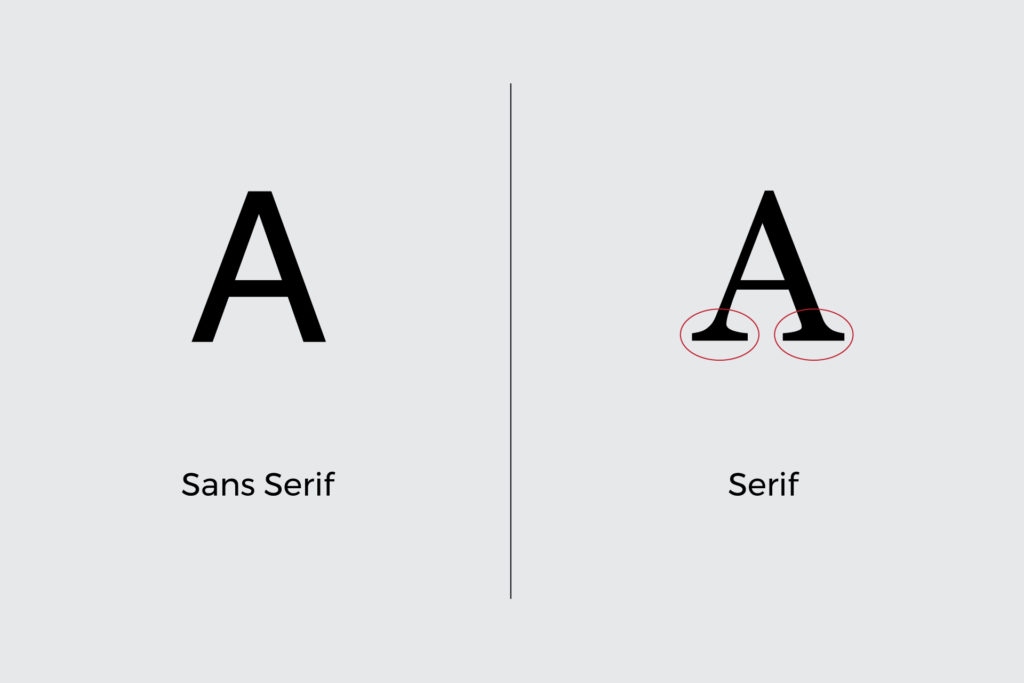
Your brand will determine the best logo typography for you. If you want your logo to have a more traditional look, serif will be the best choice. This style comes from classical typography and connotes elegance and tradition. For example, the secondary logo for Peter Zimmerman Architects is in an uppercase serif. This makes sense for their brand because the firm has a more traditional style rooted in classical elements.

If your brand is more contemporary, a sans serif font will be a better fit. Sans serif type is more minimalist and simple. This style will feel younger and easier to read. The logo for Alarm Connections demonstrates sans serif type in action. This works for the brand because the company is newer and going for a younger feel.

During the logo design stage of logo branding, it is common to see different kind of fonts paired together. You may want to use a serif font for the main wordmark and a sans serif font for the tagline, because the tagline copy is smaller and sans serif fonts are more legible. Using more detailed serif style fonts for all the copy in your logo will likely make it less readable. Pairing multiple fonts together is a standard professional approach in logo design. The logo for Harth Builders demonstrates this pairing.

In summary, the basics of logo branding and typography involve first selecting serif or sans serif fonts. Consider the vibe of your brand and which of these styles would be the best fit. You may also want to combine type styles if your logo includes a smaller tagline. Then you can tackle the rest of the details that will make your logo stand out such as color, spacing, and capitalization. You may not always notice fonts, but that doesn’t mean they don’t matter. Logo typography will influence a viewer’s impression of who you are at just a glance.
However, when in doubt, it’s always best to turn to the professionals. For over 30 years, the Neff team has helped businesses find their brand’s perfect logo with comprehensive logo and branding services. Whether your business is rebranding or just hoping to revitalize its logo, you can rely on our team of logo branding experts to develop a logo that will accurately reflect your brand.
When thinking about a brand you like, or you identify with you typically think of the logo they have to represent their company. A logo is a part of a brands identity and helps you easily identify a brand just by looking at their logo. Logos are the foundation for your company and its what fosters brand loyalty. Logos are supposed to
Logo Branding can really make or break your brand. You only have one chance to create a lasting impression with someone and logo branding really creates that connection with your consumer. Logos branding typically helps your brand be easily recognized and distinguished from the rest of the bunch. Even if your logo does not have your company name in it people should still be able to recognize your brand and know it’s you. A good example of this is Nike. With a simple swoosh logo Nike has been able to establish a brand with a loyal audience who knows them by their iconic logo. You want to ensure your company logo has the same long-lasting impression as one like Nike.
An overall branding plan really helps build customer loyalty and builds trust in your business. Many businesses can overlook their logo branding and don’t see the importance, but logos are essential. When creating a business, you are creating a whole brand. You want consumers to be able to identity you from the rest and have a unique logo. About 93% of purchasing decisions are made based on visual perceptions which means your branding is important. Text, color, and design are key elements of your logo branding that will help distinguish you and create brand awareness. If customers are able to connect with your logo, they are unlikely to forget about your brand. If customers remember your brand, they are more likely to want to continue supporting your business and telling others about it as well.
Overall, logo branding is really important for you and your business and should not be taken lightly. Take your time in distinguishing yourself and creating something that is unique to your business. Even if your business is similar to someone else’s you want the logo branding to be able to easily distinguish you from the rest. Someone should look at your logo and know that it belongs to your business. Logo branding is a vital part of creating a successful business.
A brand refresh involves understanding the problems and strengths of the existing brand and analyzing how to fix them. Many businesses may not need to start from the ground up, with a complete rebrand. A brand refresh updates your system, rather than totally rebuilding it. The process leverages the existing successful elements and tweaks pieces that aren’t working.
Not sure if your brand needs a refresh? We encourage prospective clients to engage in a brand analysis to find out. As a creative marketing agency, the brand analysis is just one of the services that we offer at Neff. We use the analysis to research the current brand before beginning a refresh to decide if it is necessary. The analysis considers how the brand will function throughout an integrated marketing strategy. It helps us determine how you can benefit from a refresh.
In a brand analysis, we review everything from messaging, to social media, to logos and marketing materials. To begin, we seek to understand the brand’s growth over time. To do this, we collect research on how the brand is perceived.
The brand analysis process can be quite extensive to uncover actionable insights. Remember, an effective design process always begins with research. Some examples of questions we seek to answer may include:

Your brand messaging begins with a purpose, values, and mission. Before designing, we make sure these are clearly defined and speak effectively to your target audience. Brand strategy is a critical step to justify any decisions made later in the refresh process.
Looking at the big picture, your identity system is a visual representation of who you are. Your messaging works hand in hand with these visuals to represent your brand. You need a logo that stands out and stands for you. Your logo also has to be responsive, with versions for different applications that will be able to read at small and large sizes.
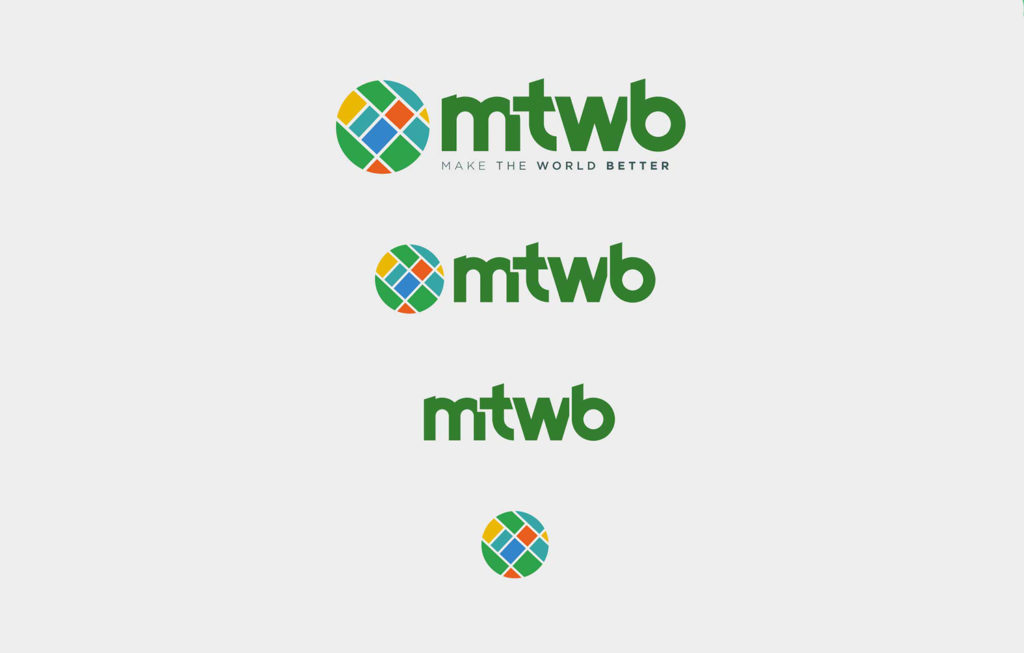
Your color palette is one of the key ways to convey emotion. What is the main color that you’re using, and how does it make a viewer feel? Where else is that color used? How unique is it? The brand analysis will evaluate whether this is effective and outline a course for improvement during the refresh.
Typography is another way to identify your brand. We might suggest a sans-serif typeface for a more modern look, a serif typeface for a more traditional look, or a combination of the two. During the brand analysis, we look at your typography choices and how information is organized. During the refresh process, we may update your type systems and outline the dos and don’ts for your brand.
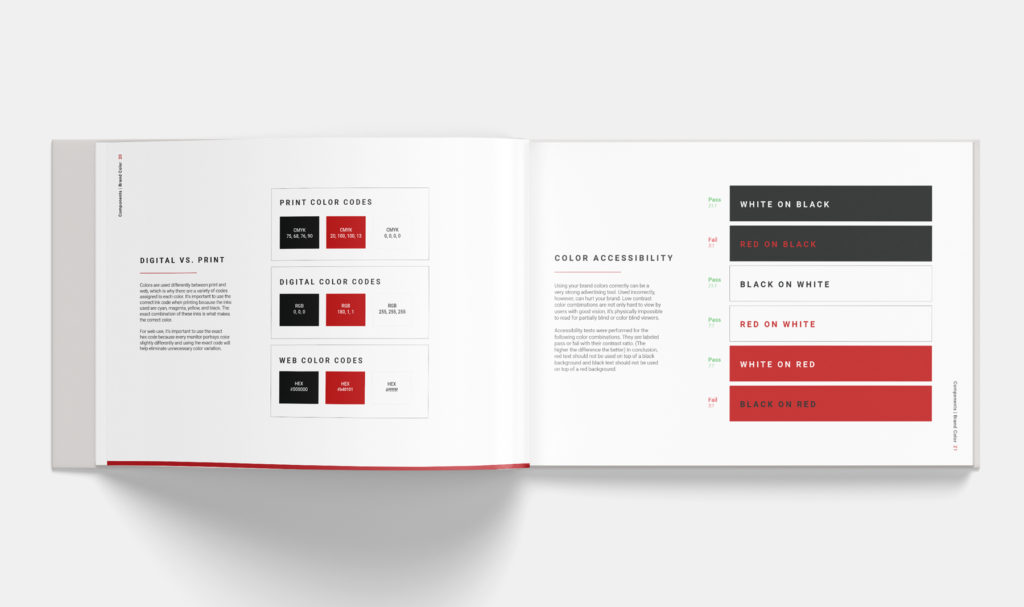
Your corporate identity is the visual system that defines your brand. First, we typically begin with a business card, letterhead, and envelope to establish a system, before moving on to other materials. All of this collateral should work together as a cohesive group. For instance, a unified look and feel will contribute to a memorable and effective brand. Our brand analysis will look at your current corporate identity to see what is working and what is missing. As a result, we can fill in the gaps during a refresh.
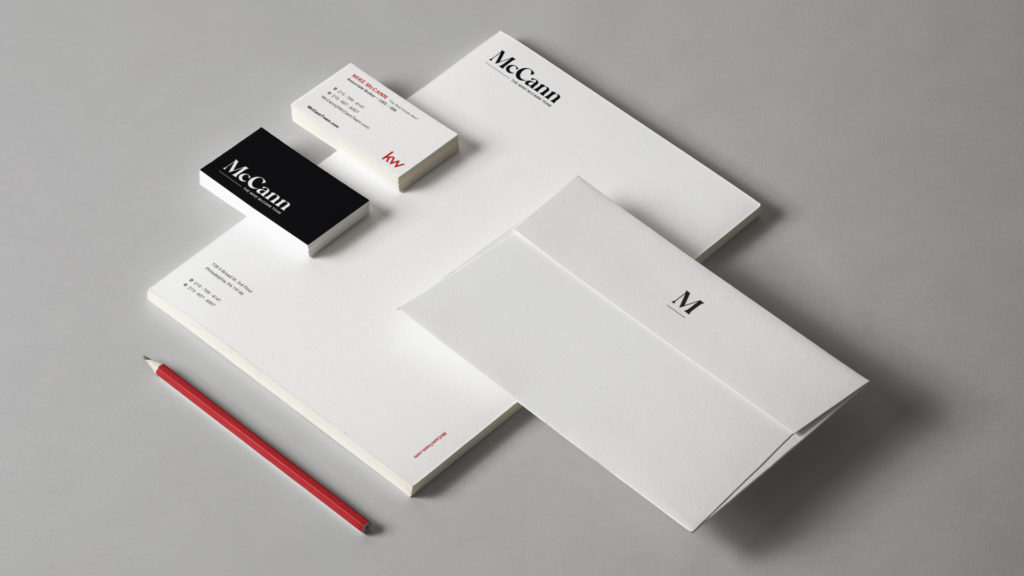
Lastly, we will communicate standards for how your brand elements should be used moving forward. Whether you have an in-house marketing department, or use outside vendors, your brand guidelines are crucial to maintain organization and consistency. These guidelines are arguably the most important part of the process. Without structured implementation, you will not see the maximum value from the brand refresh.
As one of the top three advertising agencies in Philadelphia, Neff leverages integrated marketing strategies to promote your brand. But to get the most value for your advertising investment, it is important to have a strong brand identity. This is where a brand refresh can help! In conclusion, a brand refresh can help you differentiate from your competition and effectively use your marketing budget.
What’s brand messaging? It’s all about finding the right way to communicate with your audience. Your messaging is an ambassador of your brand. Help customers understand what makes you unique. Most people agree that it’s a good idea for brands to tell their stories, but less people think they do so effectively. To give you a window into our process, here are some of the things we break down in a brand analysis.
How do you communicate your brand as part of an integrated marketing approach? Many brands tell customers who they are, what they do, how they do it — in that order. We recommend a different approach to messaging. Lead with your purpose: why you exist. Follow up with your values, then your mission. This is the most compelling and relatable sequence to communicate information.
What type of story should your brand tell? Make sure to connect with your target audience on an emotional level to establish a connection, then tell them what you offer.
In most industries, customers are compelled to make a purchase based on how you think. This can have more influence than the quality of the product or the price point it’s offered at. Teach customers to think like you, and they will become advocates of your brand. This is the power of brand messaging.

A brand purpose declares why you exist. Here’s a hint: it’s not to create profit. Profit is always a result, not a driver. Your purpose is a belief. It’s a big idea that can be clearly communicated. For example, people deserve to be more physically fit, or to feel comfortable in their home. A brand purpose has the power to inspire people through messaging.
People have values, and brands should have them too. Values, or principles, describe how you act and interact. This not only applies to customer interaction, but to our global society. Your audience can have a reasonable expectation of how your brand will handle any situation based on your values. This helps to humanize the brand. Some examples of values include transparency, agility, or innovation. Brand values should be reflected in your messaging.
It describes what you do. Mission statements present an ambitious, but achievable position that acknowledges your industry and the services you provide. For example, a mission statement could include having the most user-friendly technology, or being the most respected car company in the USA. Mission statements have the power to inspire confidence in your ability to perform specific tasks.
How will you know if your brand messaging is effective? Conduct a thorough brand analysis, including the entire integrated strategy. Using both internal and external sources, collect a set of data to inform your perspective. This could include customer focus groups, sales records, employee surveys, and more. The scope of your investigation should correspond to the size of your company and brand goals. This involves considering not only what you say and how you say it, but how your brand looks as well.
We recommend contacting an expert on strategy and brand messaging. While this work can be done in-house, we see greater benefits by connecting with a branding agency outside your organization. It is important to get a fresh opinion. This is a time when first-impressions can actually hold a lot of weight! As one of the top three advertising agencies in Philadelphia, Neff is prepared to provide expert advice on branding and strategy.
Your brand is more than just a logo. It’s the entire integrated experience that tells the story of who you are and what you stand for. Your brand is not any one thing –– it’s your culture, your content, your marketing, and your team. In 2020, make it a goal to build your brand using an integrated strategy.
You want to make a meaningful, positive impression. Therefore, your brand should establish an emotional connection and build trust with your target audience, generating new customers and affirming your relationship with current ones. You should have a distinct look that sets you apart as well as messaging that shares your mission and your unique voice.
Working with an agency can help guide you through the branding process. As a top marketing agency in Philadelphia, Neff leverages integrated services to tell brand stories from all angles. Consider what you might need and how you like to collaborate when choosing an agency partner.

You can think of a brand like a person with specific characteristics. For instance, your brand personality is the unique qualities that make you different than other brands and appealing to your target audience. Are you funny? Sophisticated? Adventurous? Your brand personality will help to create a personal connection with prospective customers.
Consider what service you offer and why. Your brand should communicate what you do, so it’s crucial to have a clear understanding of the problem you solve. For instance, do you offer a product that meets a specific need, or a more intangible service like peace of mind? When prospective customers view your marketing media, they should understand your value right away.

Your brand is a conversation with your target audience. In order to make sure you’re reaching the right people, take some time to consider who they are. One way is to develop buyer persona profiles to reference when building your identity. Creating buyer personas is just one part of Neff’s extensive brand audit process. Pinpointing the user will help you tailor your messaging accordingly.
Understanding your competitors will ensure that you know how to stand out in your market. What do you offer that they don’t? Why should a prospective client choose you? The answer to this will directly inform your visual identity, which will serve to remind your audience of your added value. Your strategy will communicate these unique characteristics.

After considering your brand personality, target audience, and unique selling propostion, you need to use this information to build and promote a brand. It’s crucial to have a well thought out strategy because the quality of your brand represents the quality of your business.
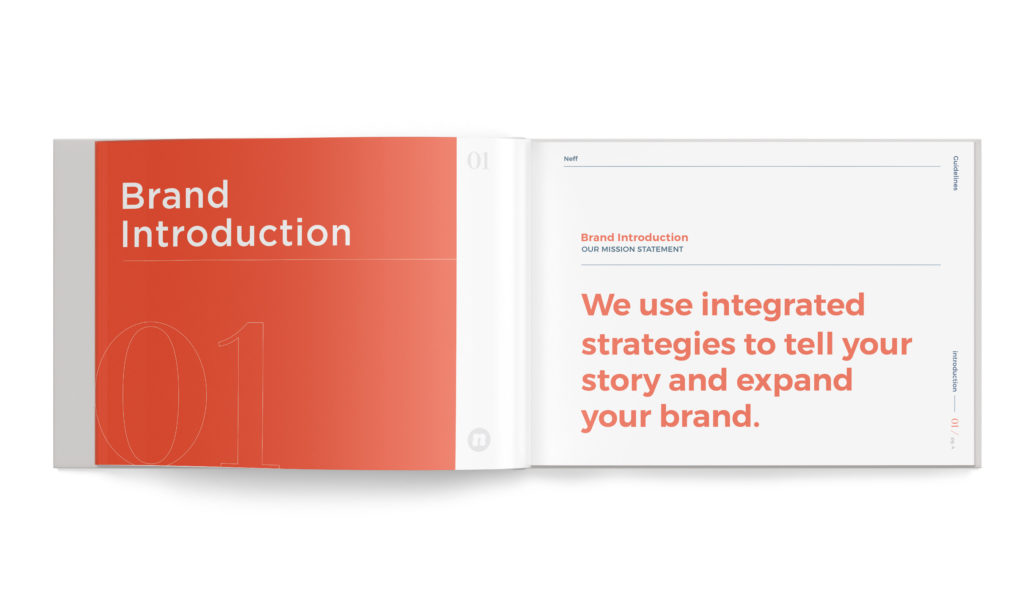
You’ll want to create a visual identity and corresponding messaging in a clear design system. This system needs to be flexible and scalable across platforms and audiences. Leverage other services as needed in your brand strategy. Partnering with an integrated agency where you can get everything you need in one place can save you time, money, and effort.
Video and social media are dynamic storytelling tools that are a great way to connect with your audience. You can also use PR to spread brand awareness and thought leadership in relevant markets. Whatever tools you end up using in your marketing strategy, make sure that you’re connecting emotionally with your audience. Be authentic, and create a brand that accurately represents who you are.